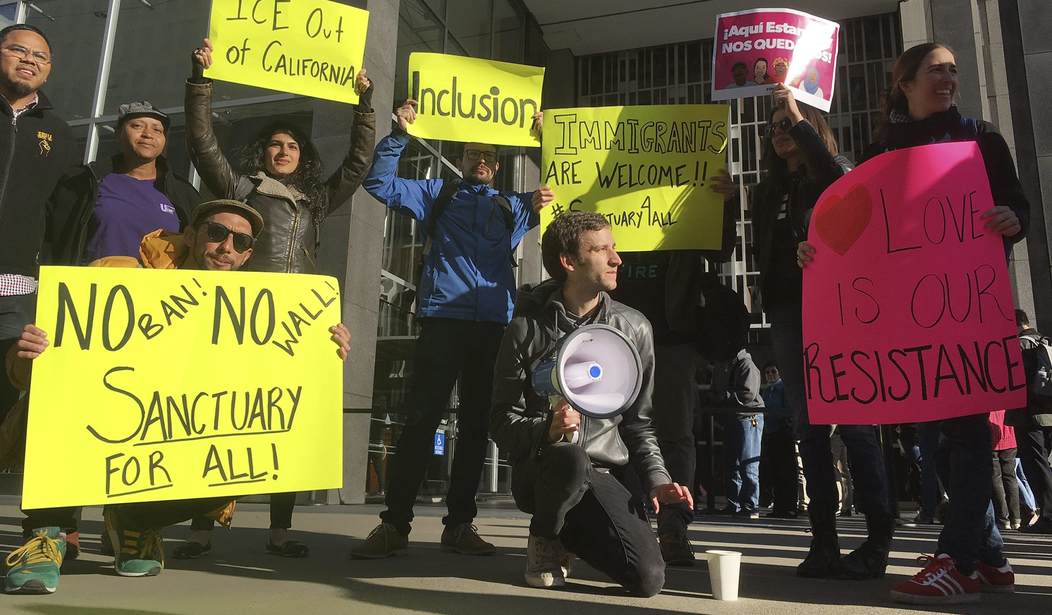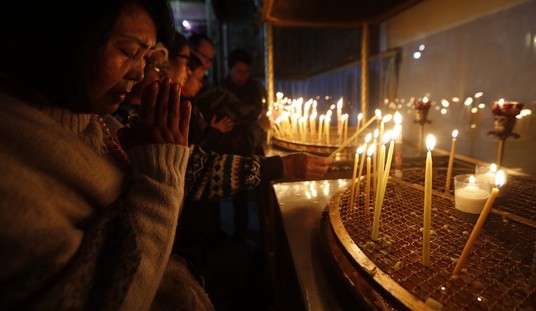William H. Orrick III is a Democrat campaign bundler and left-wing political activist. He has been known as “Judge Orrick” since 2013, when President Obama managed to get him on the federal bench — with the assistance of Republicans Senators Jeff Flake (Arizona), Lisa Murkowski (Alaska), and Susan Collins (Maine). All other Republicans opposed Orrick’s nomination, except Bob Corker (Tennessee) who failed to vote.
It was as Judge Orrick that the San Francisco-based social justice warrior issued a 49-page decision this week. His decision purported to invalidate President Trump’s executive order (EO) on federal funding for “sanctuary” jurisdictions — cities, counties and other municipal subdivisions that refuse to cooperate in federal immigration-law enforcement.
I say “purported” because Orrick’s screed is a ruling about nothing. The Trump Justice Department had argued that the EO did nothing to alter pre-existing law. Though Orrick tendentiously disputed this construction of the EO, he admitted that his opinion “does nothing more than implement” the Justice Department’s view. He further conceded that his ruling had no effect on the administration’s power to enforce conditions Congress has placed on federal funding (i.e., the very conditions Trump incorporated in the EO by telling his subordinates they could only act “to the extent consistent with law”). Meanwhile, the administration has not endeavored to strip any federal funding from any sanctuary jurisdictions.
So, in effect (or should we say, non-effect?), nothing has happened and nothing has changed. The ruling’s sole achievement is a fleeting star turn for its author. Actually, make that another star turn: In 2015, Judge Orrick thrilled the Democrat-media complex by carrying water for the National Abortion Federation, which wanted an injunction against a whistleblower’s release of videos showing Planned Parenthood officials selling baby parts — oh, sorry, I mean “fetal tissue.”
The ruling is instructive, though, as a measure of how politicized the judiciary has become. Consider the matter of executive orders.
Orrick’s opinion includes the following remarkable passage (at p. 16):
Government counsel explained that the [Executive] Order is an example of the President’s use of the bully pulpit and, even if read narrowly to have no legal effect, serves the purpose of highlighting the President’s focus on immigration enforcement. While the President is entitled to highlight his policy priorities, an Executive Order carries the force of law. Adopting the Government’s proposed reading would transform an Order that purports to create real legal obligations into a mere policy statement[.] [Emphasis added.]
Can it be that, after eight years of Obama’s usurpation of legislative power, judges have forgotten what proper executive orders are?
Contrary to Obama’s practice and Orrick’s apparent belief, executive orders do not carry the force of law — at least not presumptively. They are supposed to be policy statements that give presidential guidance to subordinate executive officials. That is because the president has no unilateral authority to decree law — it is for Congress to write the laws; the executive branch just enforces them.
Now, we have to qualify these principles with caveats like “presumptively” and “unilateral” because there are special situations in which executive orders may have the force of law. These occur when Congress delegates legislative authority to the president — a dubious practice but, alas, a familiar one.
Take, for example, the International Emergency Economic Powers Act. Under the IEEPA (which is codified in sections 1701 et seq. of Title 50, U.S. Code), the president is empowered to declare a national emergency due to a foreign threat to the United States, and to decree regulations and prohibitions on financial transactions pertinent to the threat, particularly transactions between Americans and hostile foreign powers.
But absent congressional authorization, presidents may not make pronouncements that have the force of law. In general, executive orders do not “create real legal obligations.” They can be said to create duties only in the sense that subordinate officials are supposed to obey directives from a superior. But that is a chain-of-command obligation, not a legal duty. Cabinet secretaries get fired if they defy presidential orders; they do not get prosecuted or sued. Legally, such defiance does not trigger a presidential obligation to terminate a subordinate – the president may fire executive branch officials for any reason, or no reason, for they serve at the president’s pleasure. Consequently, the president’s executive orders do not have the “force of law” even with respect to the subordinate government officials the president is legally authorized to direct. As for the rest of us, the president has no authority to impose legal obligations on us; only Congress may do that.
Judge Orrick seemed mystified by the notion that an executive order could be “a mere policy statement,” or a hortatory rendering of a president’s “policy priorities.” When the Justice Department’s lawyers explained — as if explanation were needed — that these were, in fact, the purposes of the EO, Orrick strangely claimed that Justice was reading the EO “narrowly.” (Apparently, “narrowly” is Ninth Circuit-speak for “accurately.”) Orrick then suggested that this “narrow” reading couldn’t possibly be what was intended by the president — i.e., that there was no way the EO could possibly mean what it says. Why? Because if it was just about announcing policy, the judge theorized, there would be no reason to issue an EO. From this asinine premise, Orrick leapt to the conclusion that Trump must instead be up to something sinister: a sweeping withdrawal of federal funding from sanctuary jurisdictions, heedless of any conditions Congress has attached to funding programs.
To the contrary, stating policy preferences and priorities is one of the basic and desirable reasons for issuing executive orders. It is an effective, transparent manner of communicating administration objectives to the executive branch and the public. It is not enough to say that Donald Trump is not the first president to use EOs this way. This is what EOs are for.
How have we gotten to the point where courts presume bad faith from the proper use of executive orders, and simultaneously imply that a normal executive order would have the force of law?
Of course, we are dealing with a “progressive” partisan here, so throw logic out the window. Can there be any doubt that, if Donald Trump were to issue an executive order that actually purported to create legal benefits and duties (like Obama administration directives on immigration did), Judge Orrick would write an equally indignant opinion about how executive orders must not have the force of law?
The irony is that Judge Orrick essentially did what he falsely accused President Trump of doing. Trump did not use his constitutional authority to issue executive orders as a pretext for usurping congressional power; but Orrick did use his constitutional authority to issue judicial opinions as a pretext for usurping executive power.









Join the conversation as a VIP Member